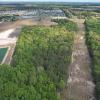A look inside the Pentagon
For someone who lives to take photographs, being told not to take any is akin to being told not to breathe. So is the case when you visit the Pentagon in Arlington, Va.
Without special permission, the only location you can take photos is in the visitor’s waiting area. Tours have to be prearranged so background checks can be done on all visitors. Security is extremely tight.
Even so, taking a tour of the massive building is special. Members of the Delaware Community Appreciation Group were invited May 17 for a tour with Army Maj. Gen. Phillip McGhee, the director of the Army budget. The general has been so impressed with the group’s work to raise money and provide an annual barbecue outing for wounded warriors at Walter Reed Army Medical Center, he wanted to give something back to the volunteers. The group will return to Walter Reed Sunday, June 19.
A special honor guard – walking backwards the entire time – escorts small groups through parts of one of the world’s largest office buildings that serves as the headquarters of the Department of Defense. Gen. McGhee stressed that point during the tour – the Pentagon is where the business of the various branches of the armed services is done. It’s where billions of dollars appropriated by Congress are dispersed. It’s also where intelligence is gathered through agencies like the Defense Intelligence Agency.
He also stressed that no commanders are assigned to the Pentagon because it’s not where military field decisions are made. There are thousands of clerical and financial personnel working in the seemingly endless offices. We stood in one hallway that was as long as three football fields.
The Pentagon is a city’s within itself with support services – everything from restaurants to jewelry stores – for its 23,000 military and civilian employees.
Built in the early years of World War II, the massive structure was open for business in January 1943 after only 16 months of construction at a cost of $83 million.
A $4.3 billion renovation program was begun in 1998 and is expected to be completed this year.
Tragedy struck the Pentagon at 9:37 a.m. on Sept. 11, 2001, when American Airlines flight 77 smashed into the western side of the building killing 189 people, including 125 Pentagon employees.
During the tour, the honor guard said as bad as the attack was, it could have been much worse. About 20 percent of the building was damaged, but a hit in any other location could have damaged half the building.
The area hit had undergone major renovations and was the only area of the Pentagon with a sprinkler system, and it had been reconstructed with a web of steel columns and bars to withstand bomb blasts. The steel reinforcement, bolted together to form a continuous structure through all of the Pentagon's five floors, kept that section of the building from collapsing for 30 minutes—enough time for hundreds of people to crawl out to safety.
The area struck by the plane also had blast-resistant windows—2 inches thick and 2,500 pounds each—that stayed intact during the crash and fire. It had fire doors that opened automatically and newly built exits that allowed people to get out.
Memorials inside and outside honor those who perished in the attack. One hallway is lined with quilts from people and school groups all over the country honoring those who perished.
Crews worked around the clock to finish repairs of the damaged section under budget in eight months – for an estimated two-year project – and refused overtime pay.
Pentagon facts and figures:
More than 23,000 military and civilian employees.
1.2 million pieces of mail each month.
Complex is 6.5 million square feet with 3.7 million square feet of office space and 16 parking lots to hold more than 8,700 vehicles.
Even with 17.5 miles of corridors, it still takes only seven minutes to walk between any two points in the building.
The complex covers 34 acres.
During the renovation project the walls were coated with Kevlar.
The building is highly efficient and is completely LEED certified.
The complex is assigned seven zip codes.
The five-sided building is listed on the National Register of Historic Places.






















































